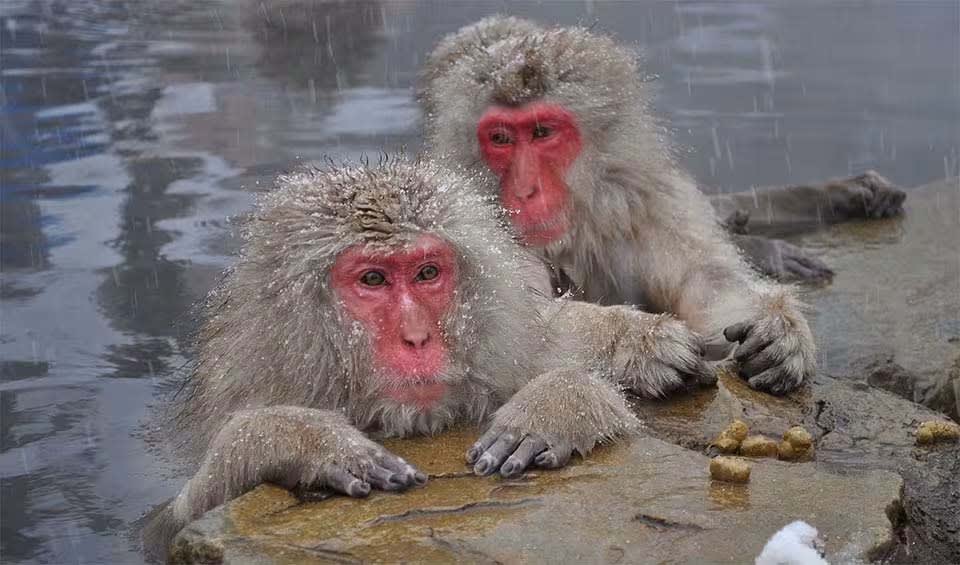It holds a unique position in the primate world due to its remarkable adaptation to cold climates, earning it the affectionate nickname “Snow Monkey.” This distinction makes it the most northerly surviving nonhuman primate species, capable of enduring winter conditions that are unusual for primates. The sight of these macaques bathing in hot springs amid snow-covered landscapes has captivated observers worldwide, symbolizing their resilience and adaptability.
Sporting a dense, luxuriant fur that varies in color from shades of brown to gray, the Japanese Macaque is well-equipped to withstand the chill of its habitat. This thick fur covers most of their body except for their striking crimson rumps and distinctive hairless cheeks, which provide an interesting contrast to their otherwise furry appearance. Sexual dimorphism is evident in this species, with males generally being larger than their female counterparts. Additionally, these monkeys are characterized by their relatively short tails, which distinguish them from other macaque species, as well as by their pronounced beards and lengthy whiskers, adding to their distinguished look.
Their social structure is both complex and hierarchical, organized around tightly knit troops that can number in the hundreds. These groups are matriarchal, with females remaining with their natal groups for life and males leaving once they reach maturity. Social bonds within these groups are maintained through grooming, a critical activity that not only serves hygienic purposes but also reinforces alliances and hierarchies within the troop.
The Japanese Macaque’s diet is omnivorous and varied, including fruits, leaves, insects, small animals, and even occasionally crops from nearby human settlements. Their ability to exploit a wide range of food sources is another testament to their adaptability and has enabled them to thrive across a range of environments, from subtropical lowlands to subalpine regions.
Distribution
 Japan
JapanAnything we've missed?
Help us improve this page by suggesting edits. Glory never dies!
Suggest an editGet to know me
Terrestrial / Aquatic
Altricial / Precocial
Polygamous / Monogamous
Dimorphic (size) / Monomorphic
Active: Diurnal / Nocturnal
Social behavior: Solitary / Pack / Herd / Troop
Diet: Carnivore / Herbivore / Omnivore / Piscivorous / Insectivore
Migratory: Yes / No
Domesticated: Yes / No
Dangerous: Yes / No





